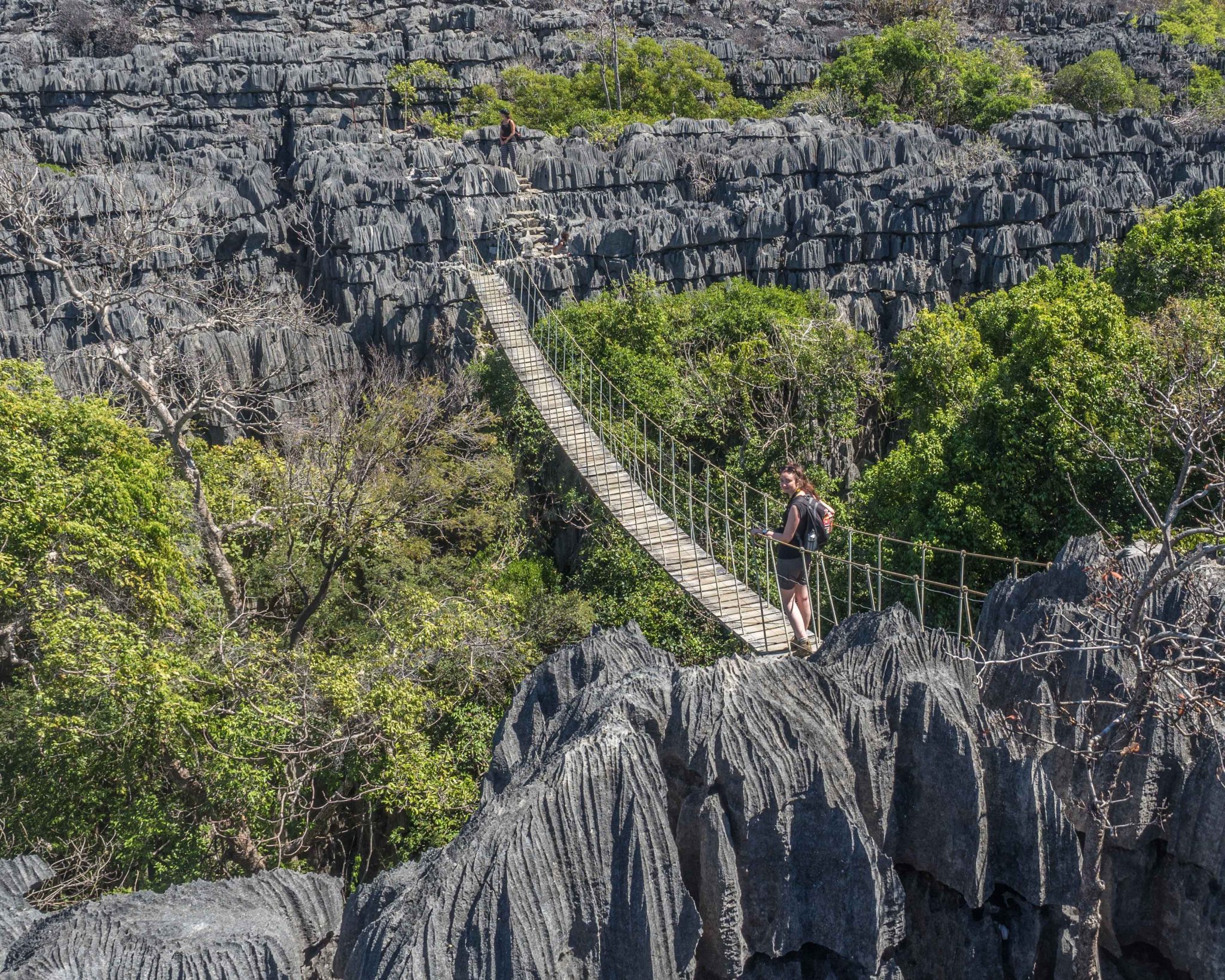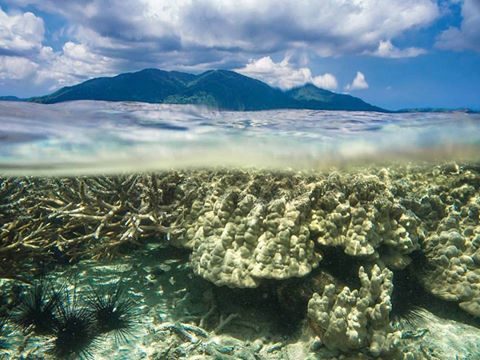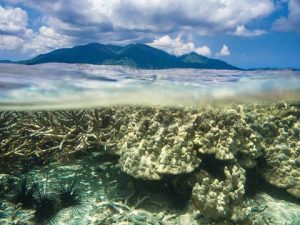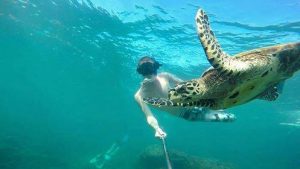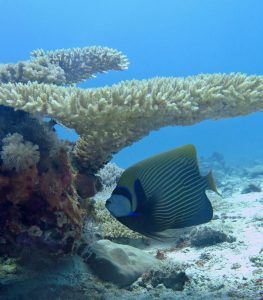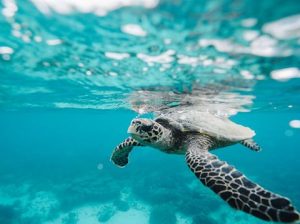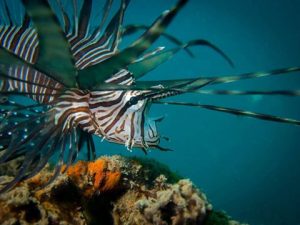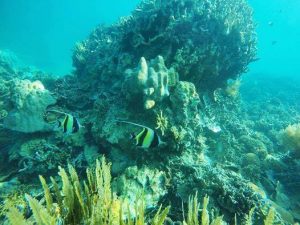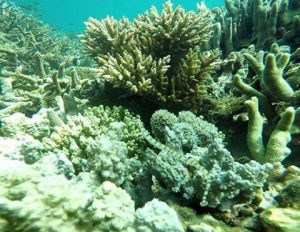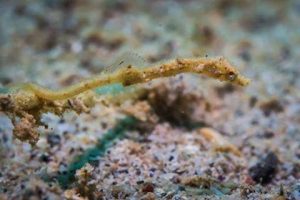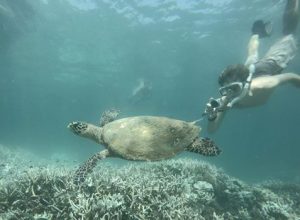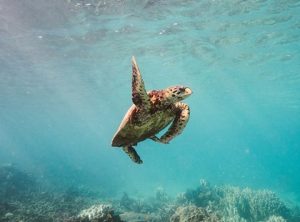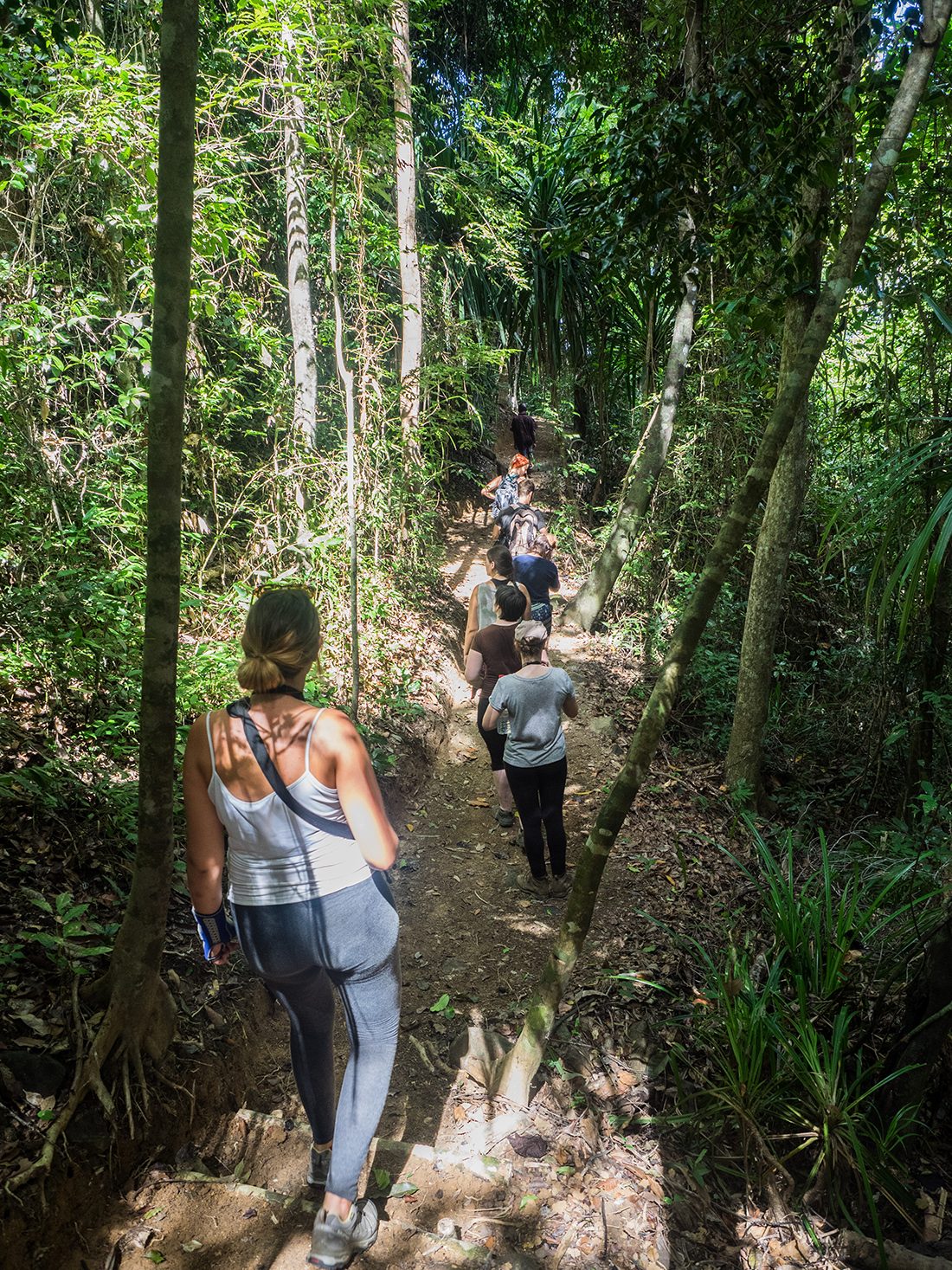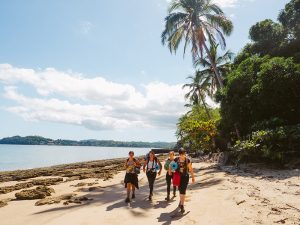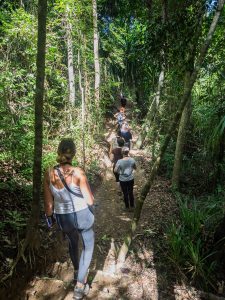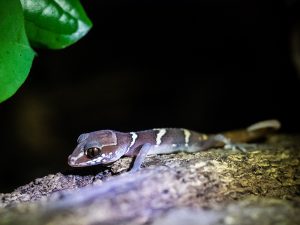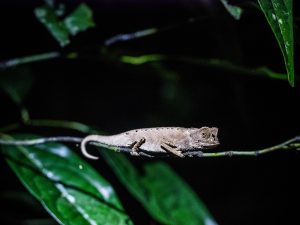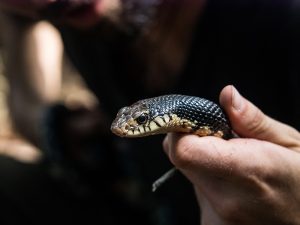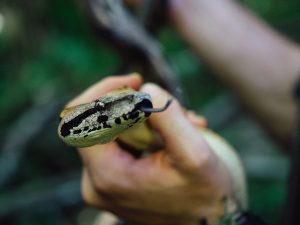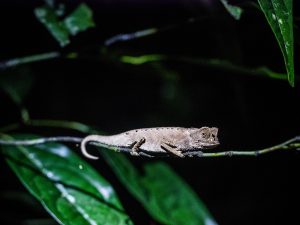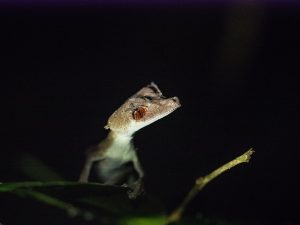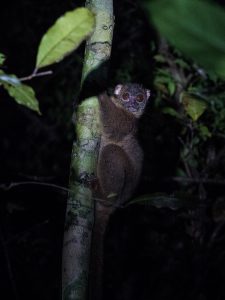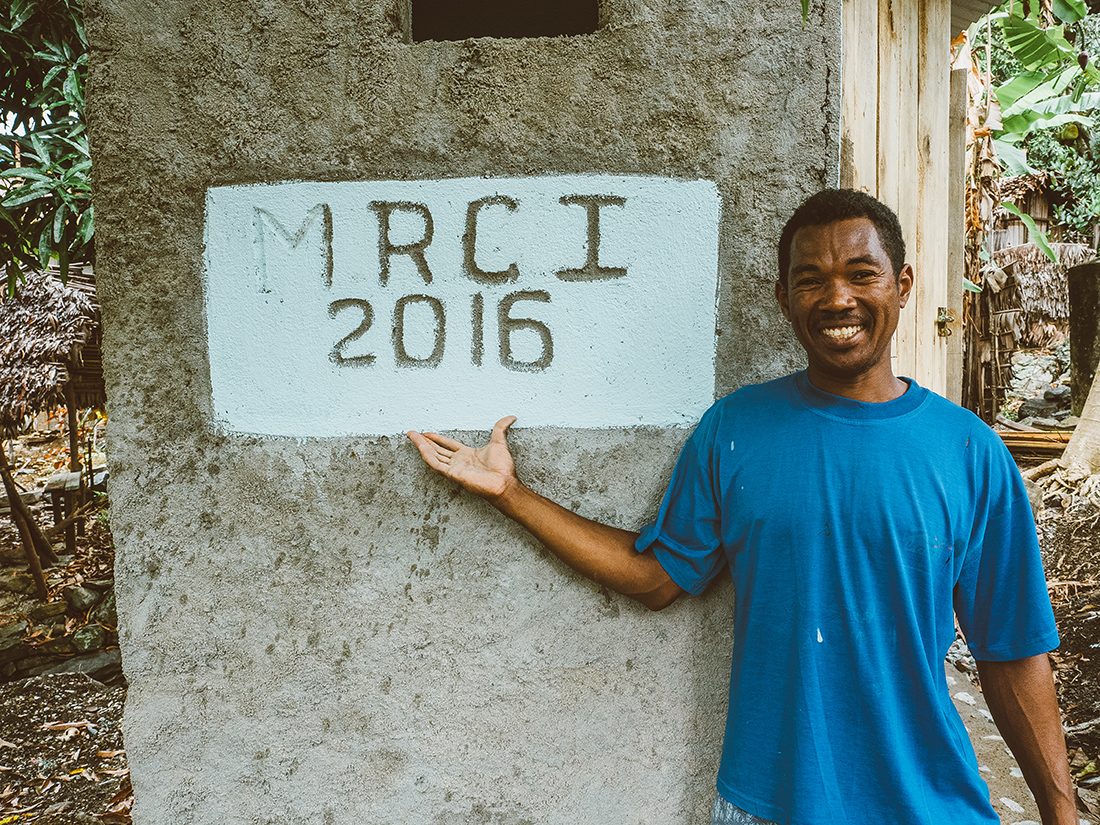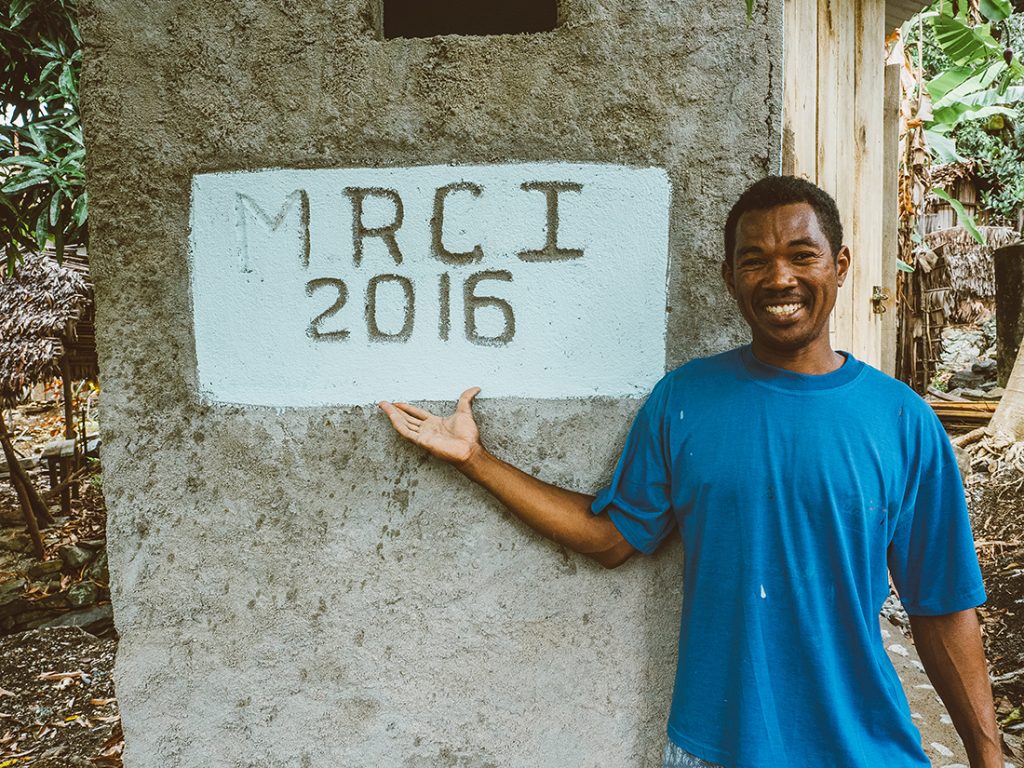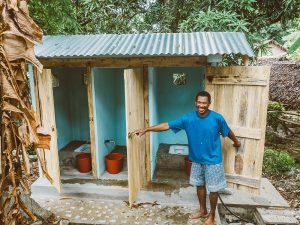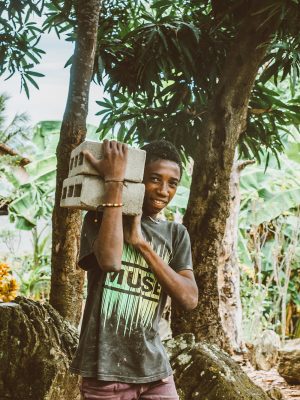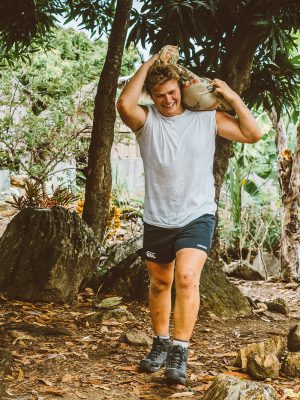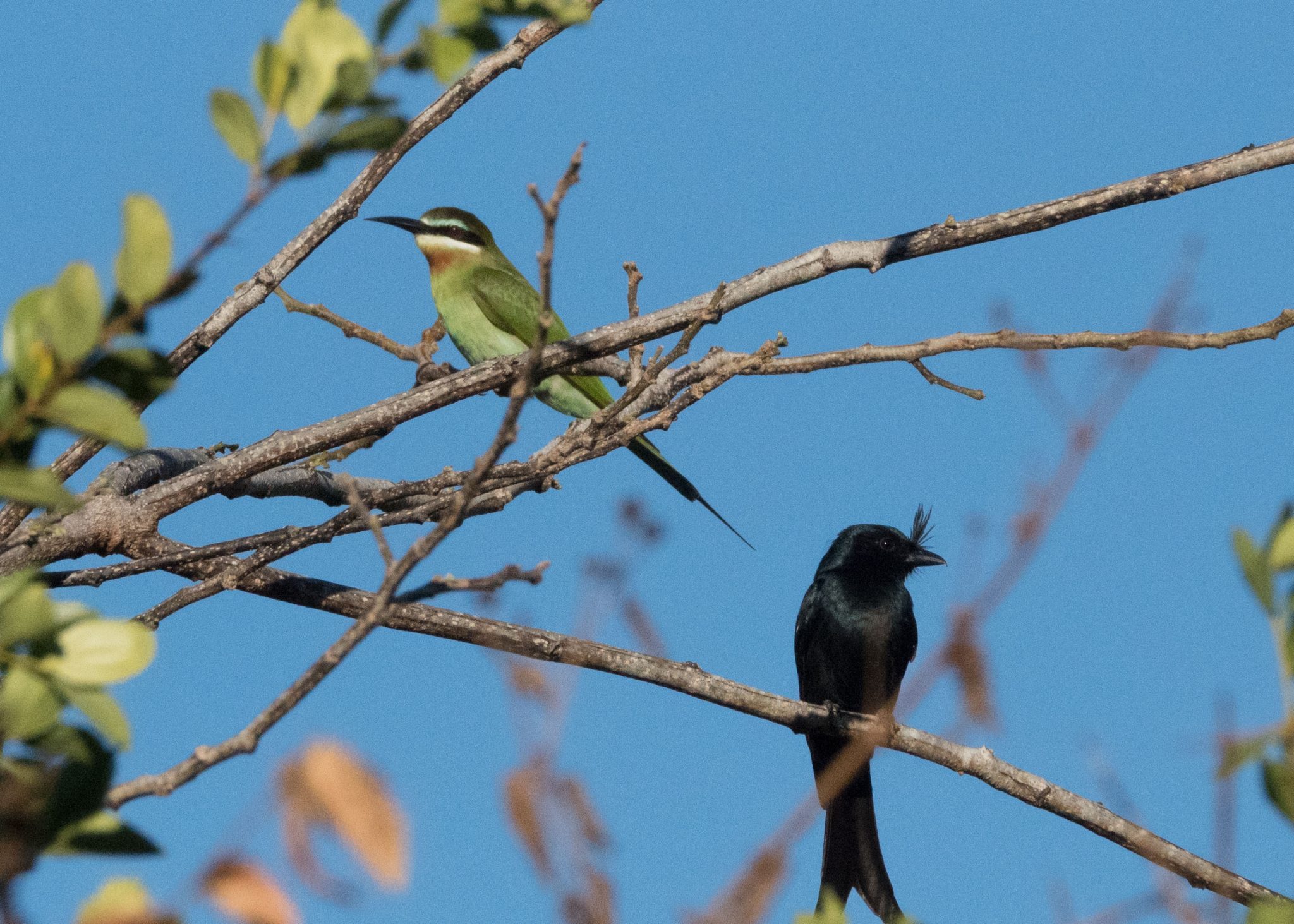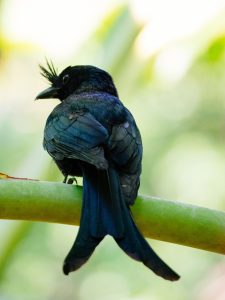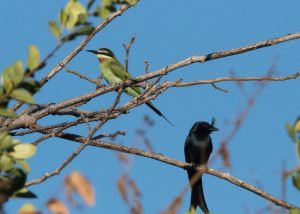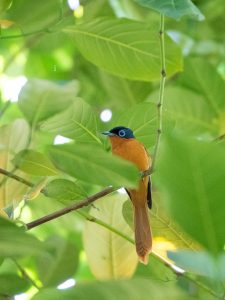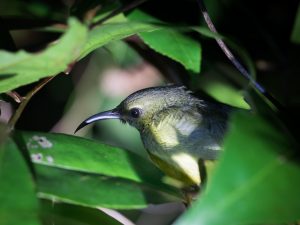Volunteers Journey to an Exotic World
As part of both our Forest Conservation and Teaching English volunteer programs, volunteers enjoy a five day adventure tour through the Ankarana Forest Reserve. Natalia shares her experience with us…
“My friend, you are late, the boat leaves”.
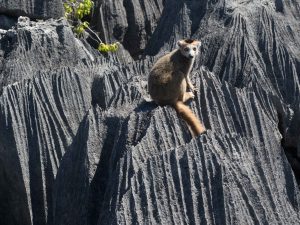 Our party of four volunteers made its way through the busy port of Hell-Ville. The port provides transport back to Ankify (the closest mainland port) and other islands in the area. Needless to say there were many boats moored at the harbour. Serjay, a local I had met the day before, had booked us a speedboat to Ankify and taxi-brusse to Ankarana. We were led smoothly through customs and loaded onto a speedboat with a name that translates to “fast like the wind”. Our driver seemed particularly excited about the name. After a quick glance to check where the life jackets were located, we were off. “Wind maker” seemed a more appropriate name.
Our party of four volunteers made its way through the busy port of Hell-Ville. The port provides transport back to Ankify (the closest mainland port) and other islands in the area. Needless to say there were many boats moored at the harbour. Serjay, a local I had met the day before, had booked us a speedboat to Ankify and taxi-brusse to Ankarana. We were led smoothly through customs and loaded onto a speedboat with a name that translates to “fast like the wind”. Our driver seemed particularly excited about the name. After a quick glance to check where the life jackets were located, we were off. “Wind maker” seemed a more appropriate name.
Arriving in Ankify, a large sign over the entrance to the port confirmed that we had arrived at the correct destination and the port seemed to be exploding with people. Our next objective was to find the taxi-brusse. Asking around for Jimmy’s Transport, a larger, obviously respected man signalled for us to stand to one side. Before long somebody else arrived and explained that he would take us through town to buy a banana and water for the trip before taking us to the taxi-brusse.
With luggage piled high and roped down to the roof, the four of us board climb aboard. Being tall, I am ushered into the front seat. This is a blessing as Joe and Hetty are cramped in the third row with six other people…and it’s only a three seat row.
The three hour journey to Ankarana was an exhilarating game of “dodge the pothole, Zebu and continuous stream of locals using the road”. It’s busy but not with cars.
It was incredibly refreshing to be on this journey after leaving city life behind a month ago. Traveling at a typical speed of about 60kmh never felt so good.
We arrived at the Ankarana Forest Reserve at 2:00 pm where we met our friendly local guide, Joaqim. By then, the team were more than ready for lunch and eager to explore the park. I could already tell this was going to be a good trip. On the walk to our lodge we saw many exotic fruit trees. Joe eagerly climbed every tree and to try all the fruit, as our guide patiently explained what was ripe and edible. Over the next few days we tasted a number of different fruit, Joe climbed several trees and we all came away with a new favourite fruit, possibly not to be found anywhere else in the world.
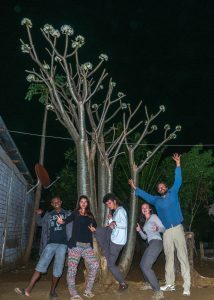 As the park is open only during daylight hours, we did a night walk along a path outside the park on the first night. The wildlife in the forest is exotic and plentiful. The whole team excitedly joined in identifying forest animals by recognizing the reflected eye colour when holding torch at head level. A red reflection is that of a mouse lemur. These are incredibly cute lemurs the size of kittens that timidly move from branch to branch eating insects, fruit, flowers and leaves. They are rarely seen during the day, but we saw several of them that night, along with many geckos and chameleons.
As the park is open only during daylight hours, we did a night walk along a path outside the park on the first night. The wildlife in the forest is exotic and plentiful. The whole team excitedly joined in identifying forest animals by recognizing the reflected eye colour when holding torch at head level. A red reflection is that of a mouse lemur. These are incredibly cute lemurs the size of kittens that timidly move from branch to branch eating insects, fruit, flowers and leaves. They are rarely seen during the day, but we saw several of them that night, along with many geckos and chameleons.
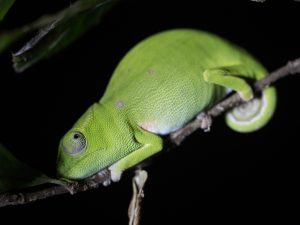 The next morning saw everyone well-rested and still excited from the success of the night before. We then headed off into the Forest Reserve, each taking six litres of water with us. The park is quite flat but we travelled slowly to enjoy both the stories our guide shared with us and to spot the flora and fauna.
The next morning saw everyone well-rested and still excited from the success of the night before. We then headed off into the Forest Reserve, each taking six litres of water with us. The park is quite flat but we travelled slowly to enjoy both the stories our guide shared with us and to spot the flora and fauna.
The Ankarana Forest reserve is situated on a small partially vegetated plateau of 150 million year old limestone which slopes gently to the east but ends abruptly at the west at the “Wall of Ankarana” (a sheer cliff that extends for 25 kilometres. Erosion and seismic activity have created a rugged 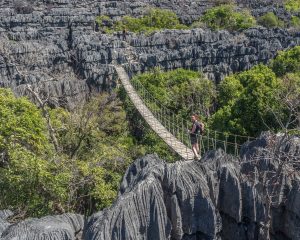 alien landscape where the forest is fenced off by large canyons of sharp Tsingys (karstic plateaus in which groundwater has undercut the elevated uplands and gouged caverns and fissures into the limestone). The word Tsingy roughly translates to “walk on your tip toes”. I certainly would not like to travel far across these rocks without shoes.
alien landscape where the forest is fenced off by large canyons of sharp Tsingys (karstic plateaus in which groundwater has undercut the elevated uplands and gouged caverns and fissures into the limestone). The word Tsingy roughly translates to “walk on your tip toes”. I certainly would not like to travel far across these rocks without shoes.
While seeing such an abundance of wildlife as well as the striking Tsingy was amazing, the highlight of our day was to experience one of the Ankarana caves. Earlier in the day we spotted a huge sinkhole on a dry riverbed into which two rivers disappeared. Then we went to see a section of the underground riverbed. A biologist friend once said to me, “Nature is great at sorting things. All the water is in the ocean all the trees are in the forest”. Here, nature was no less organized – all the snail shells were neatly piled in a small sand bed in one corner.
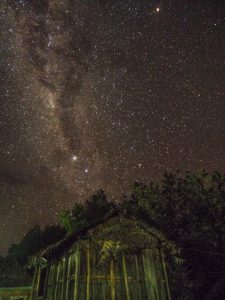 Returning to camp we were all tired from an exceptional day. After a large meal of fish, fresh vegetables and flaming caramel banana desert, the team asked for a night photography lesson. The stars were out and by the end of the lesson, all had captured at least one pleasing image of the Milky Way and a little more understanding of the amazing journeys a camera can take you on.
Returning to camp we were all tired from an exceptional day. After a large meal of fish, fresh vegetables and flaming caramel banana desert, the team asked for a night photography lesson. The stars were out and by the end of the lesson, all had captured at least one pleasing image of the Milky Way and a little more understanding of the amazing journeys a camera can take you on.
 Our final day in the park was another day to treasure. We woke early to climb the highest hill in the area for a terrific view of the Tsingy wall and surrounding Baobabs and forest. Our breakfast arrived a little late as the truck from Diego that delivers food was running late (another sign that you’re in Madagascar) as Diego is 2 hours’ drive away.
Our final day in the park was another day to treasure. We woke early to climb the highest hill in the area for a terrific view of the Tsingy wall and surrounding Baobabs and forest. Our breakfast arrived a little late as the truck from Diego that delivers food was running late (another sign that you’re in Madagascar) as Diego is 2 hours’ drive away.
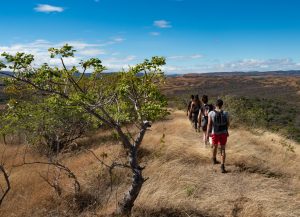 Our second stop after having a picnic below lemurs flying through the air above our heads, was the bat cave. This jaw-dropping cave has one of the largest cave entrances I have ever seen and is home to two species of bats. We also witnessed a snake catching and eating a rat (good to know the pest control is working).
Our second stop after having a picnic below lemurs flying through the air above our heads, was the bat cave. This jaw-dropping cave has one of the largest cave entrances I have ever seen and is home to two species of bats. We also witnessed a snake catching and eating a rat (good to know the pest control is working).
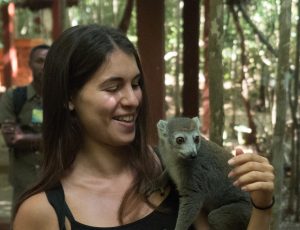 As our final hours in camp drew nearer, the team opted to do another night walk. At 6 pm we returned and were greeted by close up encounters with crowned lemurs and leaf-tailed geckos.
As our final hours in camp drew nearer, the team opted to do another night walk. At 6 pm we returned and were greeted by close up encounters with crowned lemurs and leaf-tailed geckos.
The next morning, we awoke at 4 am to catch the taxi-brusse back to our base camp. The staff at the lodge awoke early too to see us off. Although we were saying goodbye to the forest, as we boarded we knew the adventure wasn’t over until we reached camp. Within an hour I had my first exotic visitor! The van stopped by the roadside and a live duck was passed through the window and purchased by my neighbour. We travelled the rest of the way with the duck peacefully asleep in the second row.



